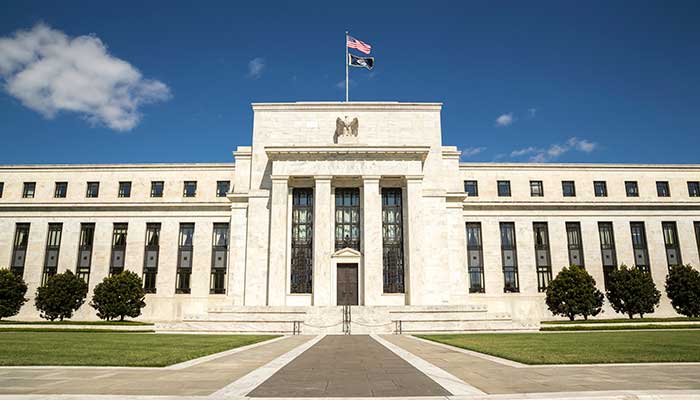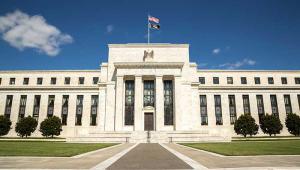web_usfederalreserve_istock_50296922_large.jpg

The US Federal Reserve.
With confidence in the trajectory of the US economy growing, Janet Yellen, the Fed’s chair, announced that the interest rate was to increase from 0.75% to 1%. The decision is one of several gradual rate rises expected this year as the bank moves to normalise its monetary policy.
The Fed has been trailing this latest rate rise for weeks to give markets as much warning as possible that the change was imminent. A 25 basis point rise was widely considered to be a given.
A bigger unknown was whether the Fed would increase the pace of its monetary policy normalisation – a move that could have prompted some turmoil on the markets.
However instead they rallied as Yellen explained that there would be no acceleration in its monetary policy tightening.
She said this would remain cautious for “some time”, even if that requires a temporary overshoot of its 2% inflation target.
“Sometimes [inflation] is going to be below 2%, sometimes it is going to be above 2%,” she said. “Two per cent is not a ceiling.”
“The simple message is that the economy is doing well. We have confidence in the robustness of the economy and its resilience to shocks.”
As well as rising inflation, the outlook for the US economy has been buoyed by sound growth data and strong employment figures for February.
Since the start of the year, the US economy has gained more than double the jobs (75,000-100,000) it needs to keep up with growth in the working age population.
The Fed also published fresh economic forecasts yesterday, which remained largely unchanged. Unlike the markets, which have lifted on the prospect of potential fiscal stimulus from the new US administration, the Fed appears to be taking a more measured stance on the possible impact the policies of president Donald Trump could have on the economy.
“We have not discussed in detail potential policy changes that could be put in place and we have not tried to map out what our response would be,” Yellen explained. “We have plenty of time to see what happens.”
The Fed is banking on the hope that, with the economy seemingly in good shape, a rate rise won’t deter borrowing and work as a drag on activity.
Elsewhere, however, campaigners have warned even a small increase in rates could have considerable consequences.
Eric LeCompte, executive director of Jubilee USA, which advocates for a fairer financial system for developing countries, said: “Over the last few years, poor countries took out more loans from wealthy countries because interest rates were so low.
“As the Fed raises rates and the dollar becomes stronger, many poor countries will see debt payments going up. Too many poor countries are still struggling to recover after the global financial crisis and I’m worried about their increasing debt burdens.”
The Fed’s decision to raise rates follows a similar move in December, when it also increased borrowing costs by 0.25 basis points.
Its current plan envisages two more rate rises this year and a further three in 2018, with the aim of returning to a neutral rate of 3% in 2019.












